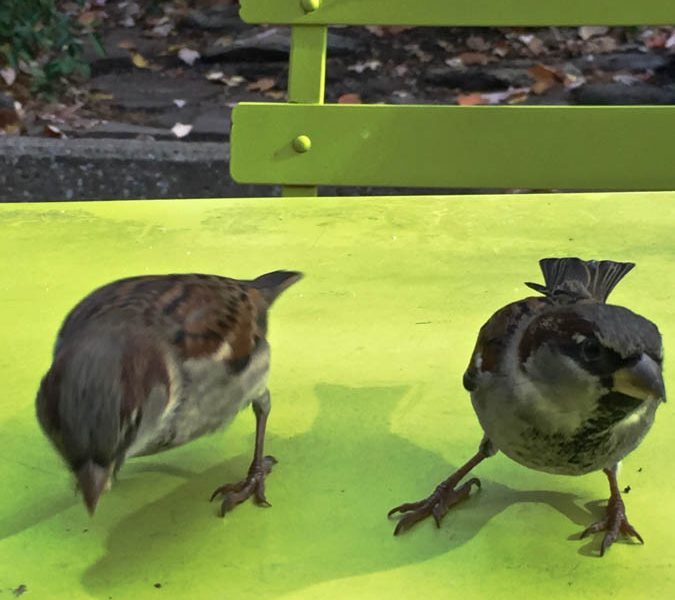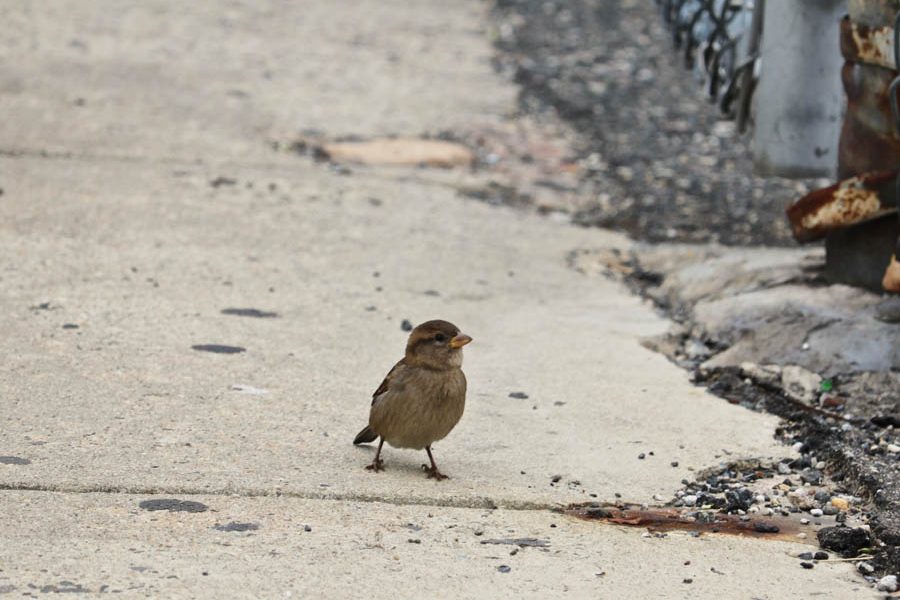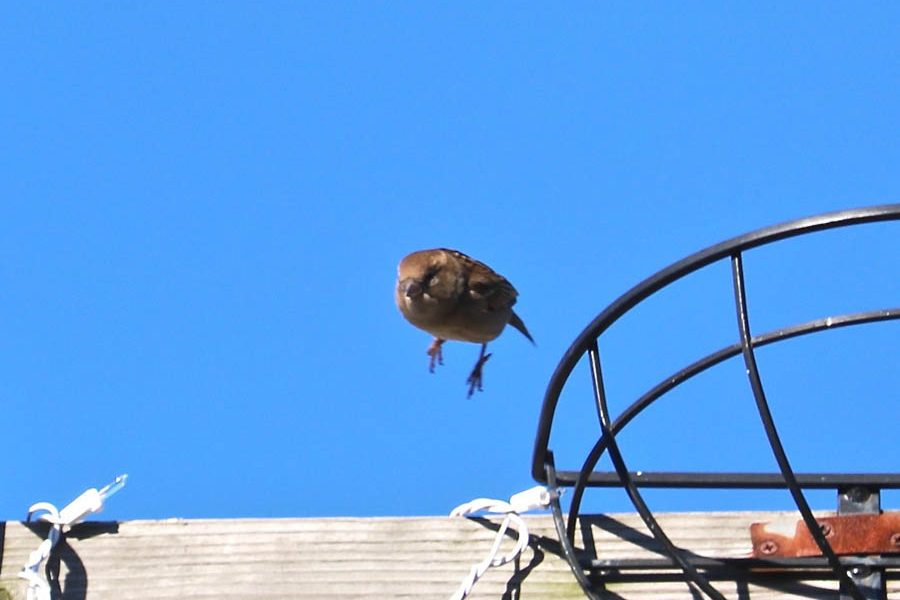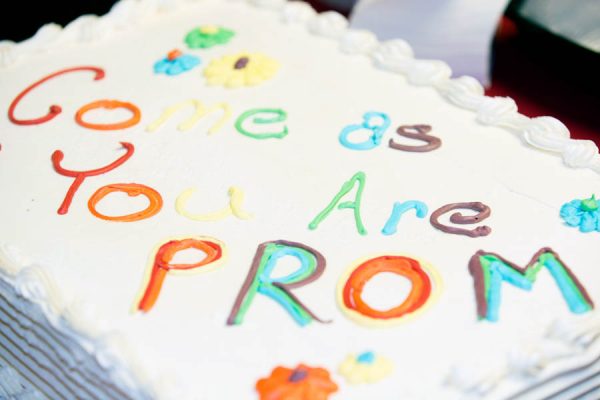Go to any park in the Riverwards, walk down any sidewalk, stop by any tree and you will hear the familiar chirping of the house sparrow. In fact, go anywhere in the world and you most likely will hear the chirping of the House Sparrow. Love them or hate them, those stinkers are everywhere and they are hearty beasts—here to stay. I can hear them now, chirping away both in my backyard at my feeder and in my front yard scrounging for beetles. I don’t mind them, although they are technically an invasive species. The first House Sparrows were introduced to the United States in 1851. There were 8 male/female pairs and they were released to control the Linden Moth population in Brooklyn. By the year 1900, House Sparrows had made it to the Rocky Mountains. If that’s not an American success story, I don’t know what is. Some birders will destroy their nests – squashing their eggs and breaking nestlings necks – because they are bullies, pushing native birds, like the Eastern Bluebird, out of their nests and taking over their habitat. House sparrows were only able to invade because humans brought them here.
Like pigeons and starlings — other ubiquitous city-birds — they are both non-native and are synanthropes. A synanthrope is a wild animal or plant that benefits from the habitats that humans have created. When I think of the damage that we have inflicted on the natural world, I have to smile at synanthropes—plucky rascals—they are true opportunists. Synanthropes are the embodiment of the American Dream in animal form, pulling themselves up by their imaginary tiny bootstraps and taking over.
“Raze this forest and build a skyscraper”, the sparrow dares developers, “I will nest in the highest eaves and I will survive. I will feast on your pizza crusts and your pretzel bites. I will line my nest with your cigarette butts. My children, too, will survive, for they are small and mighty and I will attend to them amidst the urban din.” 
In her book, “The Genius of Birds”, Diane Ackerman explains that city sparrows do, in fact, line their nests with cigarette butts because the cigarette butts contain large amounts of nicotine and pesticides, they function as a parasite repellent. I can’t help but admire their ingenuity.
Sparrows live everywhere we do. I’ve seen them in the desert and in the forests. They are Manifest Destiny in bird form — immigrants hell bent on survival pushing onward and upward, destroying those in their way, all the while propagating the species. The thing is, if they were humans, I could hate them, invasive-killers that they are, but who can hate a sparrow? They have no agenda in the same way that humans do, they just have a will to live. They aren’t spiteful, just resourceful. You will know sparrows by both their appearance and their behavior. They are tiny, sassy things, willful and full of spunk. Sparrows are technically old-world finches with heavy beaks, built for crunching things open. They have streaky brown feathers, males have a black bill, black mask, and black feathers on their chest. They are small and chubbier than native sparrows. Females are duller than males with yellow bills and an eyestripe. Both sexes have grey bellies. They are not afraid of humans and will likely approach you in the park if you are eating. Don’t be scared, remember, they are synanthropes and only here because we are. •







